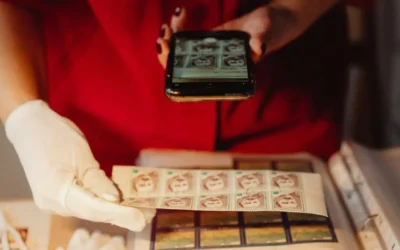Visible Archives, Vital Communities
Margot Note
Archival repositories may never fully compete with the services offered by community centers and the extensive outreach efforts provided by libraries, museums, and art centers.
However, they can become active partners with such institutions to ensure that the needs and expectations of their communities are met and exceeded.
Creative Crucibles
“Creative Placemaking,” a paper published by the National Endowment for the Arts, cites archives and special collections as excellent examples of “creative crucibles,” one of many satellite cultural spaces that contribute to the cultural and economic well-being of a community. Archivists can employ their collections as a resource to develop exciting programs and projects to promote their institutions and to connect to their users. Archival-focused art programs, oral history projects, educational outreach, and commemorative events have benefited archives in many ways. Such efforts can make archival collections more visible, create collaborative opportunities with other institutions, and help archives build relevance. Moreover, these programs have proven valuable to users in supplying learning and research opportunities, encouraging social interaction with other users, and engaging the public in community and collection development.
Archival repositories can create outreach programs that can engage more people, including hard-to-reach populations with the archives. This can also provide a way to interact directly with the community audience, hear their thoughts and ideas about the work archivists do, and communicate the organization’s message.
Archivists can become creative with activities, whether they are at large, well-funded institutions and smaller departments with more modest resources. For example, activities can rely on specific types of special collections and archives, such as art and oral history collections. In contrast, other types of archives can consider innovative types of programming, including educational initiatives, exhibitions, and interactive archives.
Ever Present Challenges
Of course, there are constraints associated with outreach projects, such as ubiquitous budget and staffing cuts and changing priorities. Specific challenges can be related to particular efforts, such as the logistics associated with mounting a public program that includes a performance component or the need to reallocate existing financial resources to pay for server space in support of digital projects. Archivists can suffer from isolation, lack of funding, and conflicting loyalties. Daily, they feel the tension between taking care of their collections, preparing them to last, and making them accessible to users.
These challenges unite all archives professionals. It is interesting to learn how others have coped with these challenges and maintained their projects when outreach activities are often viewed as an additional service rather than a core one. One way to jump over this hurdle is to institutionalize projects within the archives department’s routine work as soon as possible. When a line item in the budget changes from a project to an operational expense, it is most likely to remain that way.
Being Evident within Communities
However, increasing archival visibility in the community is not just a worthwhile venture; it can be a desperate attempt at survival. The simple truth is that the members of communities in which the archives reside will not necessarily engage with the archives. Instead, archivists must be initiative-taking in reaching out to their larger internal and external communities regularly and in various ways. Effective community engagement leads to more patrons, monetary donations, and job security.
Reaching Out to Communities
Engagement opportunities can be used to raise the visibility of the archives or special collections and increase the content of collections. For example, materials may also come in as the community learns more about what types of collections institutions have in the archives. Donors then become new stakeholders in the local institution and will encourage further donations through word of mouth. The result can be the vital communities built between archives and their constituents.
Margot Note
If you’re interested in this topic and eager to learn more, please join us for “Reach New Archival Audiences: Create a Community”, the first in a new series to be presented by Margot Note. It’s on Wednesday, January 26, 2022 at 11 a.m. Pacific, 2 p.m. Eastern. (Can’t make it? Register anyway and we’ll send you a link to the recording and slides afterwards). Register now or call 604-278-6717. And check out ArchivEra, our archival collections management software built for today’s challenges and tomorrow’s opportunities.
Similar Posts
Ensuring Long-Term Access to Digital Archives
Long-term preservation is essential to ensure digital archives remain accessible and usable.
5 Best Practices for Personal Digital Archiving
Archivists have developed best practices for organizing and maintaining personal digital archives, safeguarding digital legacies for future generations.
Interview with the Editors: Wieland and Rogers on Interdisciplinary Archival Science
Alexandra Wieland and Corinne Rogers co-edited Archival Science in Interdisciplinary Theory and Practice. My interview with them is below.
The Importance of Personal Digital Archiving (Plus Steps to Get Started)
Archivists often help individuals manage and preserve digital files of personal significance.




Leave a Comment
Comments are reviewed and must adhere to our comments policy.
0 Comments